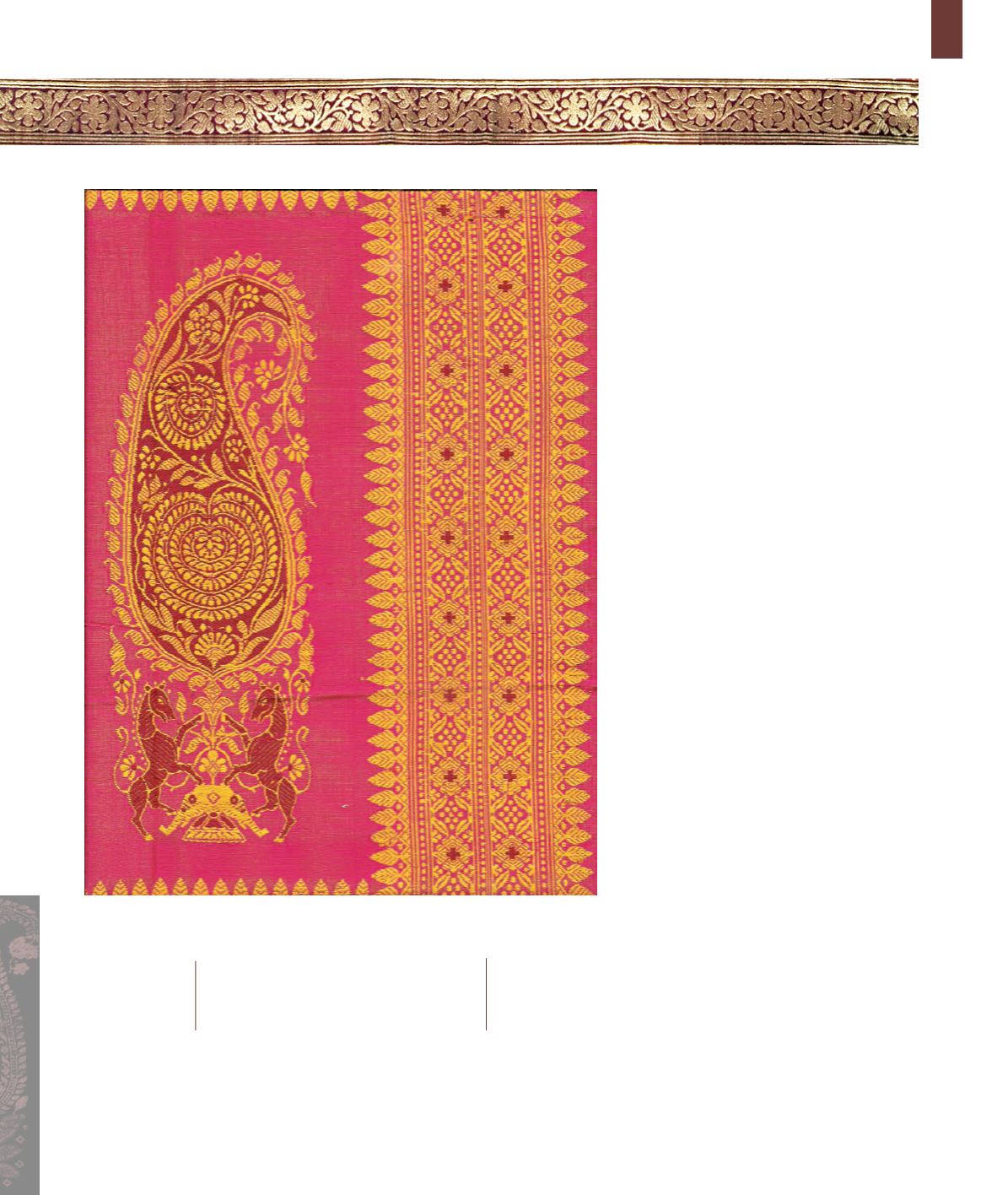
99
In today’s scenario, women are educated and
working and there is a change in their attire
too. They change old sarees according to their
convenience or fashion rather than buying a
saree that has classic beauty or a story to tell
of the effort of the weaver and the heritage
of the Banarasi saree. Thankfully, there are
some women who believe in tradition, dislike
modernisation and want to retain Indian
culture. If we weavers leave our tradition, then
one day we will have to search for our identity.
Appreciating Efforts
I learnt the art of designing from my paternal
grandfather Jaffer Ali Sahib. I learnt weaving
also from him. Because of the shortage of
funds in the family, I left school and started
working on handlooms with my grandfather
in designing patterns, creating the Jala, dyeing
yarns and weaving. The choice and colour of
the thread is important for a beautiful design.
For different types of weaves the yarns have
to be different to make the cloth unique. I
have revived 200 to 300-year-old sarees in
which there were
Baluchar, Dorukha, Latifa Buti,
Latifa Tanchoi, Sikargah, Jamavar,
and nine-yard
Maharashtrian sarees.
In 2002, I received the Shilpajanas Award in
New Delhi for preserving the family tradition
of weaving. I received the National Award
for Excellence in 2008 for my hand-weaving
expertise. In 2010, I was awarded Sutrakar
Samman by Crafts Council of India organised
by Delhi Crafts Council (DCC). In 2013, I
was awarded the Roshan Kalapesi Award,
presented by Paramparik Karigar in honour of
the organisation’s founder Roshan Kalapesi
ji
,
to promising talent in the next generation of
craftspersons. The government has started
giving awards to craftspersons so that they
continue with their family tradition. Today, the
choice of awardees is not like the olden times.
The craftsperson wants the award to use it to
sell their craft at exhibitions. Thus, the standard
of weaving is declining.
For different types of weaves
the yarns have to be different
to make the cloth unique.


